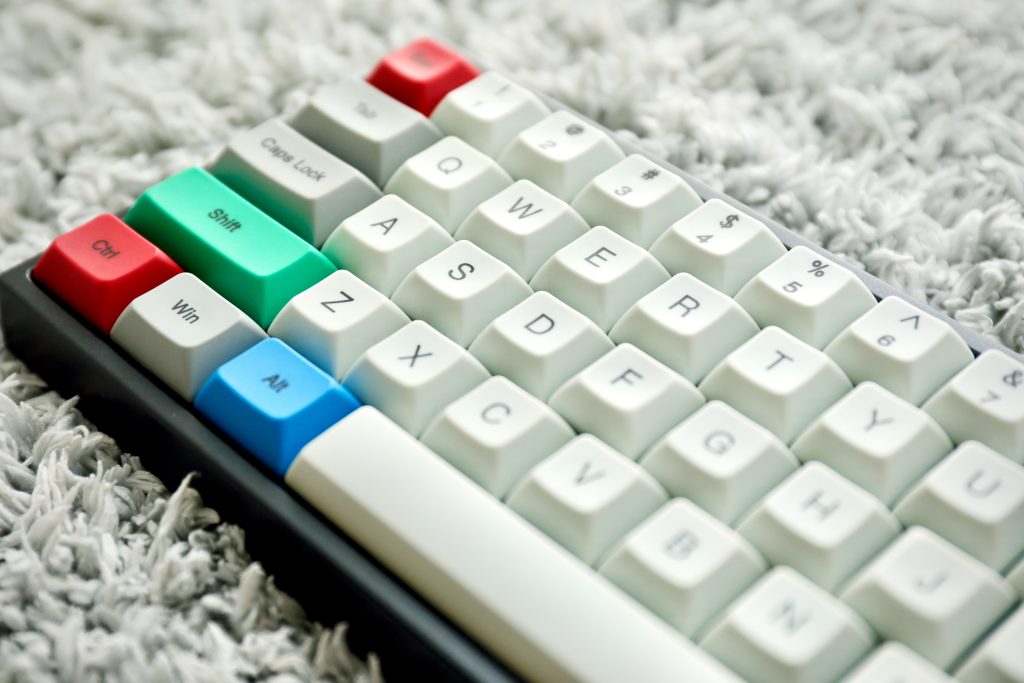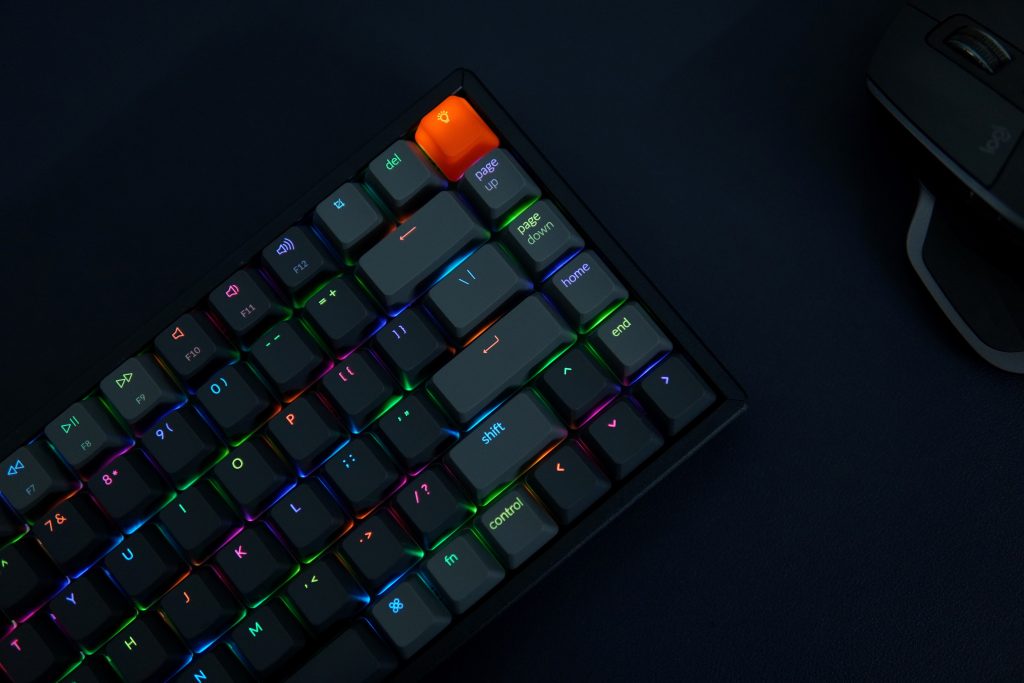It’s a question that has plagued many of us: “Are keyboards waterproof?” Whether you’ve accidentally knocked over a glass of water or just wondered about the durability of your typing companion, you’re not alone. In this deep dive analysis, we’re going to explore the world of waterproof keyboards, spill-proof technology, and everything in between.

The Tale of the Accidental Spill
Imagine you’re in the middle of a critical work task or perhaps a heated online game. Your concentration is at its peak, and suddenly, your elbow nudges that cup of coffee. Time seems to slow as you watch the liquid cascade over your beloved keyboard. Panic sets in. Is it waterproof? Will it survive? Let’s find out.
Waterproof vs. Water-Resistant:
Before we dive deeper, it’s crucial to understand the distinction between waterproof and water-resistant. Many people use these terms interchangeably, but they represent different levels of protection.
- Waterproof Keyboards: These are designed to prevent water from entering and causing damage. They can typically be submerged in water without suffering any ill effects.
- Water-Resistant Keyboards: These can handle minor splashes or light rain but aren’t designed for full immersion. Think of them as your keyboard’s umbrella, offering some protection but not complete coverage.
The Technology Behind Spill-Proof Keyboards
Keyboards have come a long way, and today’s models often incorporate spill-proof technology. This can include:
- Channels and Drain Holes: These allow liquids to flow through the keyboard without reaching the critical components.
- Sealed Membranes: These act as barriers to prevent liquid from seeping in.
- Durable Materials: Some keyboards use materials that repel water, ensuring droplets bead up and roll off.
The Keyboard’s Water Resistance Badge
You might have seen terms like “IP67” or “IP68” when researching waterproof gadgets. This IP rating tells you how resistant a product is to dust and water. The first number indicates dust protection, while the second represents water resistance. So, a keyboard with an IP68 rating is dust-tight and can be submerged in water.
Best Waterproof Keyboards of 2023
This year has seen a surge in waterproof keyboards, with many brands stepping up their game. Some of the standout models offer not only water protection but also features like backlit keys, ergonomic designs, and wireless connectivity. Make sure to check out reviews and ratings when making your choice.
| Model | IP Rating | Special Features |
|---|---|---|
| AquaBoard Pro X | IP68 | RGB backlit keys, silent switches, ergonomic design |
| WaterGuard Ultimate | IP67 | Wireless connectivity, fast charging, customizable keycaps |
| SpillMaster G3 | IP66 | Integrated palm rest, macro keys, durable key switches |
| BlueWave Precision | IP65 | Compact design, tactile feedback, anti-dust features |
Protecting Your Keyboard from the Unexpected
Even if your keyboard isn’t waterproof or water-resistant, there are steps you can take to protect it:
- Use Keyboard Covers: These thin silicone covers can shield your keys from spills.
- Position Drinks Carefully: Keep liquids away from your keyboard or use cups with lids.
- React Quickly: If you do spill something, turn off and unplug your keyboard immediately. Dry it out and avoid using it until you’re sure it’s safe.
The Evolution of Waterproof Keyboards
Going back in time, keyboards were never really designed to combat the likes of water or any liquid for that matter. The intricate design of circuits, mechanical switches, and keycaps made them vulnerable. However, as technology advanced and the demands of consumers grew, manufacturers began to recognize the need for sturdier, more resilient keyboards.
Why the Push for Waterproofing?
It’s not just about accidental spills. In certain environments, like laboratories, kitchens, or industrial settings, the risk of liquid exposure is high. Moreover, for outdoor enthusiasts who like to set up their workstation amidst nature, weather elements can be unpredictable. A sudden downpour could potentially ruin a standard keyboard. Thus, the demand for waterproof keyboards has surged in specific sectors and among particular user groups.
Materials and Design: The Backbone of Waterproofing
The essence of making anything waterproof lies in the materials used and the design approach. For keyboards:
- Silicone and Rubber: These materials inherently repel water. Many waterproof keyboards have a silicone or rubber layer underneath the keys, ensuring that even if water seeps through the gaps, it won’t reach the internal components.
- Tight Seals: The edges of the keyboard, especially where the keys meet the base, are sealed tightly, leaving no room for water ingress.
The User Experience: Does Waterproofing Affect Typing?
One might wonder, with all these protective layers and materials, does the typing experience change? The answer is both yes and no. While waterproof keyboards might feel slightly different initially, most users adapt quickly. Some even prefer the slightly cushioned feel that waterproofing elements provide. However, it’s essential to read user reviews and perhaps test a keyboard in-store before purchasing.
Maintenance of Waterproof Keyboards
One of the significant advantages of a waterproof keyboard is the ease of cleaning. Since they’re resistant to water, you can:
- Wipe them down with a damp cloth without fear.
- Use mild soapy water for a more thorough cleaning.
- Submerge certain models in water to wash off stubborn stains or residues.
However, always ensure the keyboard is dry before plugging it back in or turning it on.
Beyond Waterproofing: Other Durability Features in Keyboards
While waterproofing is a significant leap forward in keyboard durability, it’s essential to recognize other features manufacturers are incorporating to ensure a keyboard’s longevity and resilience.
Anti-Dust Features
Dust can be as much of a nemesis to keyboards as water. Over time, dust accumulation can hinder key responsiveness and even cause keys to stick. Manufacturers are now designing keyboards with anti-dust features, such as:
- Protective membranes that prevent dust from settling between keys.
- Self-cleaning mechanisms where the keyboard uses tiny vibrations to shake off accumulated dust.
Shock Resistance
Drops and impacts can be detrimental to a keyboard’s functionality. To counter this, some high-end keyboards now come with:
- Reinforced edges to absorb shocks.
- Durable keycaps that can withstand more forceful typing or accidental impacts.

Key Longevity
Avid typists or gamers know that over time, certain keys can wear out or fade. To combat this:
- Double-shot molding is used, where the key legends (the symbols or letters) are molded with the keycap, ensuring they don’t fade away with wear.
- High-quality switches, such as mechanical switches, are designed to endure tens of millions of keystrokes, ensuring a longer lifespan.
Adapting to the User’s Environment
Manufacturers recognize that users have varying needs based on their environment:
- Backlit keys for those who work in dimly lit areas.
- Silent keypress options for shared spaces or nighttime work to avoid disturbing others.
- Integrated palm rests for ergonomic support during prolonged typing sessions.
The Environmental and Economic Impact
While having a durable keyboard is fantastic for the user, it’s also beneficial from an environmental and economic standpoint. Fewer replacements mean:
- Less electronic waste, which is a growing concern in today’s digital age.
- Cost savings for the user in the long run, as they don’t have to replace their keyboard frequently.
- Reduced demand on manufacturing resources, leading to a smaller carbon footprint.
The Role of Software in Keyboard Durability
Beyond the physical aspects of a keyboard, software plays an increasingly crucial role in enhancing a keyboard’s lifespan and user experience. Let’s explore how.
Customizable Key Mapping
Software allows users to remap keys based on their preferences or the wear and tear of certain keys. For instance, if a specific key starts to fail due to extensive use, users can remap its function to a less-used key, ensuring uninterrupted typing.
Firmware Updates
Manufacturers often release firmware updates that can improve the keyboard’s performance, fix bugs, or even introduce new features. These updates ensure that the keyboard remains compatible with evolving operating systems and applications.
Dynamic Backlighting
Backlighting isn’t just for aesthetics. Software-driven dynamic backlighting can adjust based on the time of day or the application being used. This not only provides visual comfort but also extends the life of the LEDs by ensuring they’re not always running at maximum brightness.
Health and Ergonomics
Modern keyboards, through software, can track your typing habits and offer insights or reminders to take breaks, ensuring you’re not straining your hands or eyes. Some software even provides exercises or tips to maintain good posture and hand health.

Multimedia and Macro Integration
Keyboards are no longer just for typing. With software, they become integrated command centers. Users can set up macros for repetitive tasks, control multimedia playback, or even manage smart home devices, all from their keyboard.
The Community’s Role
Many keyboard enthusiasts and communities develop open-source software that further enhances the keyboard experience. From creating custom lighting patterns to developing new functionalities, the community plays a significant role in pushing the boundaries of what a keyboard can do.
The Convergence of Hardware and Software
As we move forward, the line between hardware and software will continue to blur. Keyboards will not just be input devices but holistic tools that cater to a user’s every need, from typing to task automation.
Incorporating AI and machine learning, future keyboards might predict and adapt to a user’s habits, offering shortcuts, suggestions, or even mood-based backlighting. Imagine a keyboard that adjusts its feedback or response based on how you’re feeling or one that learns your most-used phrases and offers predictive typing.
Conclusion:
In our comprehensive exploration of the question, “Are Keyboards Waterproof?”, we delved deep into the distinctions between waterproof and water-resistant keyboards, the technology behind spill-proof designs, and the significance of IP ratings. We also touched upon the evolution, materials, and design aspects that contribute to keyboard durability.
Beyond the physical realm, software enhancements like customizable key mapping, firmware updates, and dynamic backlighting add another layer of resilience and user experience. Community-driven open-source software initiatives further push these boundaries. As technology continues to evolve, keyboards, once simple input devices, are emerging as holistic, resilient tools, seamlessly blending hardware and software to cater to every user’s needs.
Frequently Asked Questions (FAQs)
A waterproof keyboard is designed to prevent water from entering and causing damage, even when submerged. In contrast, a water-resistant keyboard can handle minor splashes or light rain but isn’t designed for full immersion.
Spill-proof keyboards often incorporate channels and drain holes to allow liquids to flow through without reaching critical components. They may also use sealed membranes and water-repellent materials to protect against spills.
An IP rating specifies how resistant a product is to dust and water. The first number indicates dust protection, while the second represents water resistance. For instance, an IP68-rated keyboard is dust-tight and can be submerged in water.
Yes, many waterproof keyboards can be wiped down or even submerged in water for cleaning. However, always ensure the keyboard is dry before plugging it back in or turning it on.
While the feel might differ slightly due to the protective materials, most users adapt quickly. Some even prefer the cushioned feel waterproofing provides, but it’s always good to test before purchasing.
Software allows for customizable key mapping, firmware updates for improved performance, dynamic backlighting adjustments, and health and ergonomic insights, ensuring a prolonged and enhanced user experience.
Yes, many keyboard enthusiasts develop open-source software to further enhance the keyboard experience, from custom lighting patterns to new functionalities.

Experience is what matters at the end!!
Hi! This is Jacob Jay – founder of Keyboardgear.com! From childhood to adulthood, I’ve always remained passionate about IT, and the revolution in this industry, especially gaming on the PC can’t go out of my way. Since I’m an enthusiastic gamer, and I love to experience various gaming accessories, particularly mechanical keyboards, that really boost my gaming adventure manifolds. So, my nerve cells hit me to transfer my experiences into word form and share with others to identify the ideal keyboards perfectly fit for their gaming modes.
I know very well how hard it is to find the high-quality items available on the internet that ought to be exactly the same as seen as on the screen. But the counterfeiters have ruined the user’s trust. As I have passed all such situations, I’m obliged to deliver the genuinity and express the same as what I am saying.
So, now, I’m working on the mission to provide very helpful and frankly but trustworthy reviews and guides about various mechanical keyboards, mouses, and other gaming accessories as per my personal experiences and sound knowledge.
